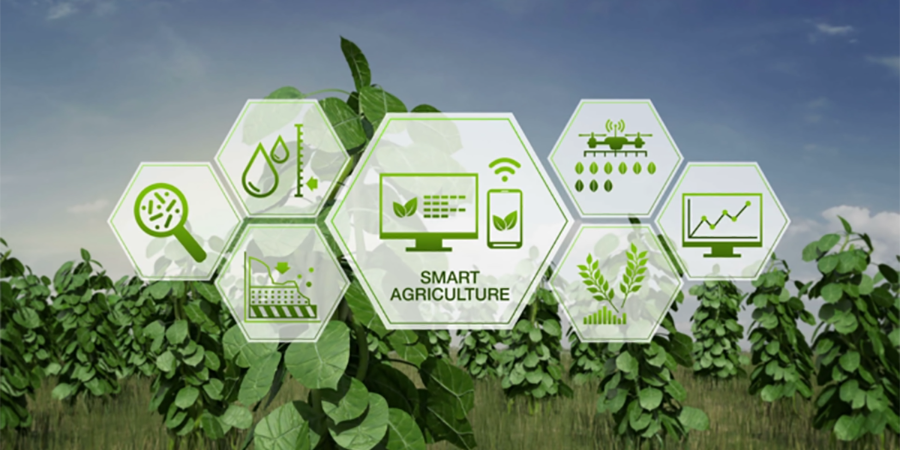Exploring the Transformative Power of IoT in Agriculture
The way farmers labor and run their farms has changed dramatically as a result of the application of the Internet of Things (IoT). To increase yields and cut expenses, IoT devices can be used to monitor crops, livestock, soil conditions, weather patterns, and pest infestations.
What applications does IoT-based smart agriculture have
IoT-based smart agriculture – TechVidvan
The smart farms are run entirely by robotics and automated equipment, negating the need for the farmer to set foot in the field. Smart farming lowers the cost of manual labor. To increase the quantity and quality of crops and other produce, IoT links and integrates the entire farm.
What does IoT mean for India’s agriculture market
IoT for Agriculture Market Share, Extent, and Industry Growth…
The increasing use of artificial intelligence (AI) and the Internet of Things (IoT) by farmers and growers, the increased emphasis on disease detection and livestock monitoring, the high demand for fresh produce, population growth, the loss of arable land, and surging… are some of the factors propelling the growth of the agriculture IoT market.
When did agriculture initially adopt IoT?
Between 2010 and 2011, its appeal surged, and in 2014, it was widely adopted. Early applications of IoT in agriculture resemble current applications: hardware for data collection and software for data organization and/or reporting
What applications does agriculture have for AI and IoT
Drones and ground-based sensors are examples of IoT devices that can collect data on crop health and take high-resolution pictures. After that, AI systems can examine this data to spot early indicators of stress, pests, or illnesses, enabling farmers to proactively safeguard their crops and increase harvests
What do IoT-based smart farming solutions entail
IoT in Agriculture: Intelligent Farming Methods
Accurate Farming. Optimize response to changes in crops and livestock by using linked devices and real-time data collection. Plants and Animals. Manage the use of unmanned aerial vehicles (UAVs) in operations.
What is the size of the IoT market in agriculture?
The global agriculture IoT market was estimated to be worth USD 11.9 billion in 2020 and is expected to grow to USD 18.7 billion by 2026, with a compound annual growth rate (CAGR) of roughly 8.8% between 2021 and 2026, according to a Facts & Factors report.
What potential applications does IoT have in agriculture?
The IoT-Powered Future of the Agricultural Sector | TEKTELIC
In reducing post-harvest losses, farmers can use the right IoT technologies to help them make better decisions about harvesting, using fertilizer, and monitoring the health of their livestock. The Internet of Things in agriculture will also assist farms in lowering their energy costs and maintenance expenses.
Often known as Agriculture IoT or AgriTech, the Internet of Things (IoT) has many uses in the agricultural industry. Using connected devices and sensors to collect, process, and analyze data to improve agricultural practices is known as the Internet of Things (IoT) in agriculture. The following are some significant areas in which IoT is influencing agriculture
Accurate Farming
Sensor Networks: To gather data in real-time, IoT devices like temperature, humidity, and soil moisture sensors are placed in the field.
GPS Technology: Farmers employ GPS technology to map their fields precisely and keep an eye on the crop requirements specific to each location.
Automated Machinery: To automate processes like planting, irrigation, and harvesting, tractors and other farming equipment can be fitted with Internet of Things devices.
Observing Livestock
Health Monitoring: By identifying symptoms of disease or distress, wearable sensors on livestock allow for the monitoring of their general health and well-being.
Location tracking: To minimize loss and improve grazing patterns, farmers can use GPS-enabled devices to track the whereabouts and movements of their animals.
Intelligent Watering:
Soil Moisture Sensors: By giving farmers up-to-date information on the state of the soil, these sensors assist in optimizing irrigation.
Weather Forecast Integration: To optimize irrigation schedules based on impending weather conditions, IoT devices can integrate with weather forecasting systems.
Intelligent Greenhouses
Climate Control: IoT devices optimize growing conditions for plants by controlling temperature, humidity, and ventilation in greenhouses.
Automated Systems: Sensors can initiate automated systems to perform functions like nutrient delivery, watering, and shading.
Software for Farm Management:
Platforms and apps that analyze data from different sensors to produce useful insights for decision-making are known as data analytics.
Remote Monitoring: By enabling farmers to oversee and manage farm operations from a distance, productivity and resource management are increased.
Farmers can enhance productivity, make better decisions, use resources more efficiently, support precision and sustainable farming methods, and more by incorporating IoT into agriculture. For widespread adoption, however, issues like data security, interoperability, and upfront costs must be resolved.

